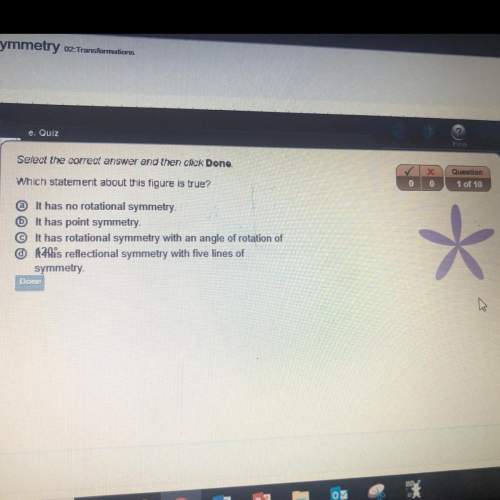
Mathematics, 23.04.2020 07:18 krandall232
Translate to an inequality (use x as the variable): A number is greater than or equal to negative five.

Answers: 3


Other questions on the subject: Mathematics

Mathematics, 21.06.2019 17:00, casting479
Ajar of gumballs contains 4 reds, 2 greens, and 6 blues. what is the probability of getting two blues in a row without replacement?
Answers: 1


Mathematics, 21.06.2019 21:00, hartzpeyton136
The description below represents function a and the table represents function b: function a the function is 5 more than 3 times x. function b x y −1 2 0 5 1 8 which statement is correct about the slope and y-intercept of the two functions? (1 point) their slopes are equal but y-intercepts are not equal. their slopes are not equal but y-intercepts are equal. both slopes and y intercepts are equal. neither slopes nor y-intercepts are equal.
Answers: 3

Mathematics, 21.06.2019 21:30, gonzalezashley152
In a test for esp (extrasensory perception), the experimenter looks at cards that are hidden from the subject. each card contains either a star, a circle, a wave, a cross or a square.(five shapes) as the experimenter looks at each of 20 cards in turn, the subject names the shape on the card. when the esp study described above discovers a subject whose performance appears to be better than guessing, the study continues at greater length. the experimenter looks at many cards bearing one of five shapes (star, square, circle, wave, and cross) in an order determined by random numbers. the subject cannot see the experimenter as he looks at each card in turn, in order to avoid any possible nonverbal clues. the answers of a subject who does not have esp should be independent observations, each with probability 1/5 of success. we record 1000 attempts. which of the following assumptions must be met in order to solve this problem? it's reasonable to assume normality 0.8(1000), 0.2(1000)%30 approximately normal 0.8(1000), 0.2(1000)% 10 approximately normal srs it is reasonable to assume the total number of cards is over 10,000 it is reasonable to assume the total number of cards is over 1000
Answers: 1
You know the right answer?
Translate to an inequality (use x as the variable): A number is greater than or equal to negative fi...
Questions in other subjects:

English, 02.11.2020 19:10

Business, 02.11.2020 19:10

History, 02.11.2020 19:10




Mathematics, 02.11.2020 19:10

Physics, 02.11.2020 19:10

World Languages, 02.11.2020 19:10





